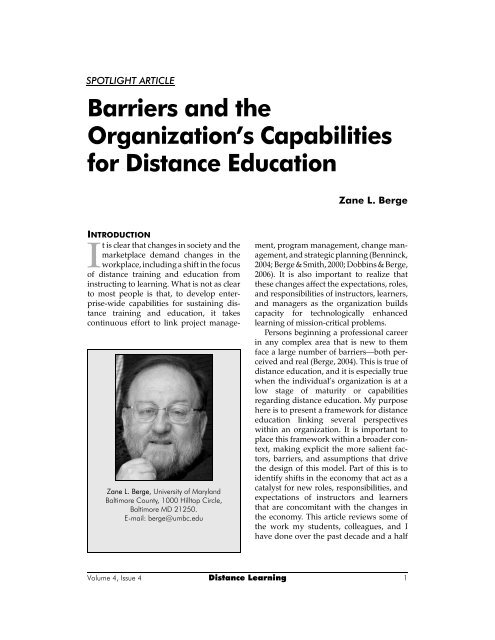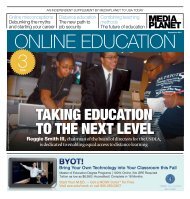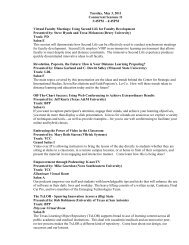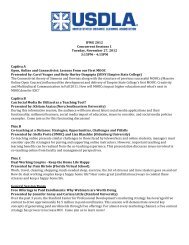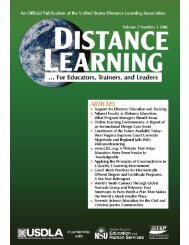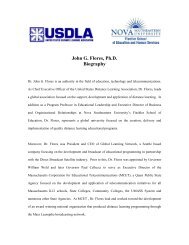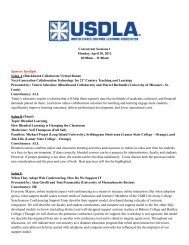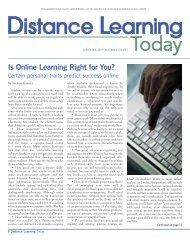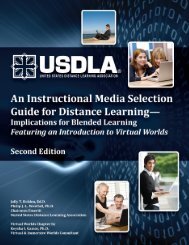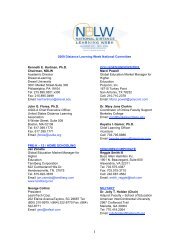United States Distance Learning Association
United States Distance Learning Association
United States Distance Learning Association
- No tags were found...
You also want an ePaper? Increase the reach of your titles
YUMPU automatically turns print PDFs into web optimized ePapers that Google loves.
SPOTLIGHT ARTICLE<br />
Barriers and the<br />
Organization’s Capabilities<br />
for <strong>Distance</strong> Education<br />
Zane L. Berge<br />
Zane L. Berge, University of Maryland<br />
Baltimore County, 1000 Hilltop Circle,<br />
Baltimore MD 21250.<br />
E-mail: berge@umbc.edu<br />
INTRODUCTION<br />
It is clear that changes in society and the<br />
marketplace demand changes in the<br />
workplace, including a shift in the focus<br />
of distance training and education from<br />
instructing to learning. What is not as clear<br />
to most people is that, to develop enterprise-wide<br />
capabilities for sustaining distance<br />
training and education, it takes<br />
continuous effort to link project management,<br />
program management, change management,<br />
and strategic planning (Benninck,<br />
2004; Berge & Smith, 2000; Dobbins & Berge,<br />
2006). It is also important to realize that<br />
these changes affect the expectations, roles,<br />
and responsibilities of instructors, learners,<br />
and managers as the organization builds<br />
capacity for technologically enhanced<br />
learning of mission-critical problems.<br />
Persons beginning a professional career<br />
in any complex area that is new to them<br />
face a large number of barriers—both perceived<br />
and real (Berge, 2004). This is true of<br />
distance education, and it is especially true<br />
when the individual’s organization is at a<br />
low stage of maturity or capabilities<br />
regarding distance education. My purpose<br />
here is to present a framework for distance<br />
education linking several perspectives<br />
within an organization. It is important to<br />
place this framework within a broader context,<br />
making explicit the more salient factors,<br />
barriers, and assumptions that drive<br />
the design of this model. Part of this is to<br />
identify shifts in the economy that act as a<br />
catalyst for new roles, responsibilities, and<br />
expectations of instructors and learners<br />
that are concomitant with the changes in<br />
the economy. This article reviews some of<br />
the work my students, colleagues, and I<br />
have done over the past decade and a half<br />
Volume 4, Issue 4 <strong>Distance</strong> <strong>Learning</strong> 1


